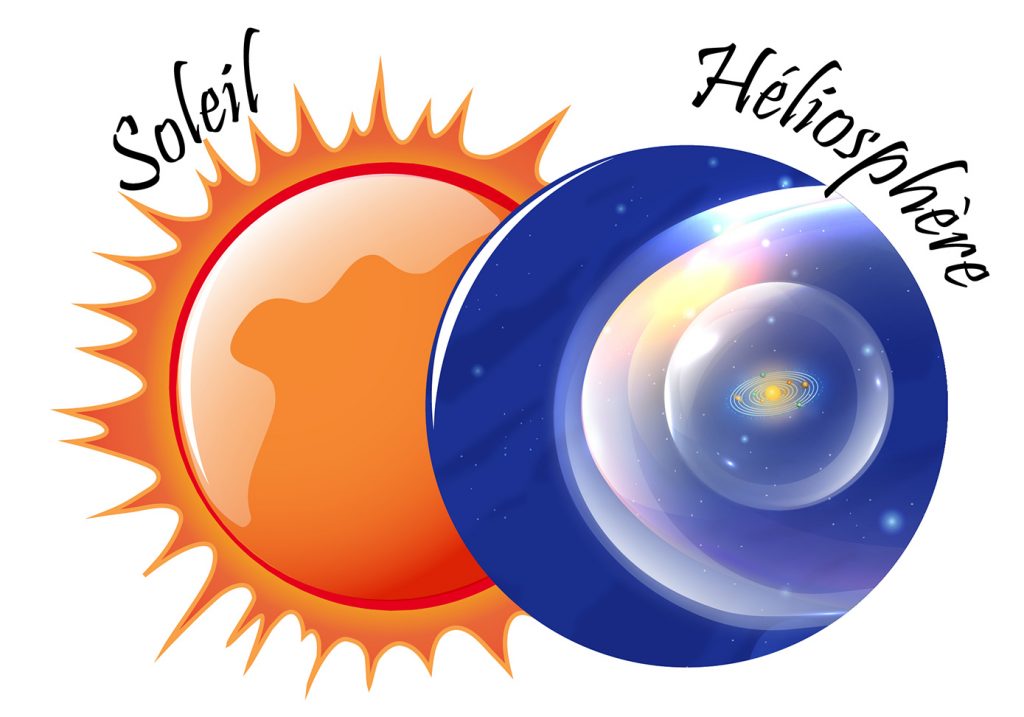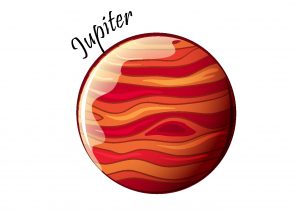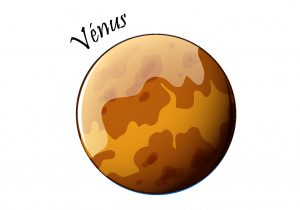Leader: Vincent Génot
Deputies: Philippe Garnier, Jérémie Lasue
The PEPS team members are interested in the set of processes governing the surfaces and space environments of the planets, moons and small bodies of the Solar System, as well as their interactions with the Sun and the solar wind. The developed themes are categorised into 4 main topics:
- The properties of the plasma and the magnetic field at the surface and in the solar corona, as well as the emergence and propagation of the solar wind and solar flares in the interplanetary medium. The main means of observation are the space missions Solar Orbiter, Parker Solar Probe, Stereo and the Climso coronograph at the Pic du Midi.
- The Earth’s space environment, from its interaction with the solar wind and the Moon in the outer magnetosphere to its internal coupling with the exosphere, ionosphere and upper atmosphere. The main means of observation are the space missions MMS, Cluster, HelioSwarm (Taranis, failed launch in 2020), Swarm and the ground SuperDARN and Eiscat radars.
- The properties of the environments of planets and small bodies of the Solar System taking into account their specificities (magnetic field, atmosphere, rings, satellites). The main past, present and future space missions are BepiColombo for Mercury, Venus Express and EnVision for Venus, MAVEN and Mars Express for Mars, Juno and JUICE for Jupiter, Cassini for Saturn, Rosetta and Comet Interceptor for comets.
- The study of planetary surfaces and small bodies of the Solar System (geological evolutions, mineralogical and chemical compositions, past environments) as well as their formation and evolution. The main present and future space missions are ChemCam/MSL-Curiosity, SuperCam/Mars2020-Perseverance and RLS/Exomars for Mars, DORN/Chang’e 6 for the Moon and laboratory instrument developments for Venus.
The PEPS team is deeply involved in instrumental developments of space missions, in theoretical developments and numerical modelling, in development of scientific analysis and archiving tools (CDPP, STORMS) and in outreach, teaching and valorisation activities towards industry and civil society (instrumental R&D, instrumental calibrations, scientific and technical expertise, Space Weather).
Objects of studies
To learn more about the projects and observation services of the PEPS team, click on the solar system objects you are insterested in …
Team members
- Berger Gilles, CNRS Researcher
- Blanc Michel, Emeritus CNAP Researcher
- Blelly Pierre-Louis, CNRS Researcher
- Chevrel Serge, CNAP Researcher
- Chide Baptiste, CNRS Researcher
- Cousin Agnès, CNAP Researcher
- Dahani Souhail, PhD Student
- Dakeyo Jean-Baptiste, PhD Student
- Dandouras Iannis, CNRS Researcher
- Devinat Marie, PhD Student
- Fau Amaury, Post-Doctoral fellow
- Forme Francois, UT3 Professor-Researcher
- Forni Olivier, CNRS Researcher
- Fruit Gabriel, UT3 Lecturer-Researcher
- Gannouni Bahaeddine, PhD Student
- Garnier Philippe, UT3 Lecturer-Researcher
- Gasnault Olivier, CNRS Researcher
- Granier Julien, PhD Student
- Génot Vincent, CNAP Researcher
- Jacquey Christian, CNAP Researcher
- Jarry Manon, PhD Student
- Jourdain Elisabeth, CNRS Researcher
- Kamran Aneesah, Post-Doctoral fellow
- Kacem Issaad, Engineer
- Kieokaew Rungployphan, Post-Doctoral fellow
- Lasue Jérémie, CNAP Researcher
- Lavraud Benoit, CNRS Researcher
- Le Liboux Thomas, PhD Student
- Lheureux Thomas, PhD Student
- Liu Zhi-Yang, Post-Doctoral fellow
- Loche Mattéo, PhD Student
- Lomazzi Paul, PhD Student
- Louarn Philippe, CNRS Researcher
- Marchaudon Aurélie, CNRS Researcher
- Maurice Sylvestre, CNAP Researcher
- Mazelle Christian, CNRS Researcher
- Meslin Pierre-Yves, UT3 Lecturer-Researcher
- Nénon Quentin, CNRS Researcher
- Pinet Patrick, CNRS Researcher
- Pitout Frédéric, CNAP Researcher
- Plotnikov Illya, CNAP Researcher
- Quitté Ghylaine, CNRS Researcher
- Rabia Jonas, PhD Student
- Rapin William, CNRS Researcher
- Rème Henri, Emeritus UT3 Professor
- Resseguier Antoine, PhD Student
- Réville Victor, CNRS Researcher
- Rojo Mathias, Post-Doctoral Fellow
- Roques Jean-Pierre, CNRS Researcher
- Rouillard Alexis, CNRS Researcher
- Rouzot Julien, PhD Student
- Sauvaud Jean-André, Emeritus CNRS Researcher
- Stcherbinine Aurélien, Post-Doctoral fellow
- Sukarmadji Ayu Ramada , Post-Doctoral fellow
- Taupin Quentin, PhD Student
- Thomas Vincent, Post-Doctoral fellow
- Toplis Michael, CNRS Researcher
- Vergé Tristan, PhD Student
Alumni
- Aizawa Sae, CNRS Researcher LPP
- Amestoy Julien, Doctor (19 March 2021)
- André Nicolas, Professor ISAE
- Barros-Sousa Ana-filipa, PhD Student Portugal
- Berthomé Erwan, Doctor (30 September 2024)
- Caravaca Gwenaël, Lecturer at GET/OMP
- Chen Zhaopeng, Post-Doctoral fellow
- Dalmasse Kévin, TAS-F Engineer
- David Gaël, Doctor (4 December 2020)
- Dahani Souhail, Doctor (2 October 2024)
- Dakeyo Jean-Baptiste, Doctor (3 October 2024)
- Eisenbeis Julian, Airbus Engineer
- Fargette Naïs, Docteur (30 September 2022)
- Fadanelli Sid, Docteur (13 October 2020)
- Foucault Etienne, Scalian Engineer
- Haberle Veronika, Docteur (13 November 2023)
- Hou Chuanpeng, Docteur (March 2024)
- Jarry Manon, Doctor (13 September 2024)
- Kotova Anna, Post-Doctoral fellow
- Kouloumvakos Athanasis, Post-Doctoral fellow
- Lenouvel Quentin, ESSP Engineer
- Lavarra Mickaël, Docteur (15 December 2022)
- Lotfi Amal, Docteur (8 December 2021)
- Persson Moa, Post-Doctoral fellow
- Poirier Nicolas, Docteur (4 July 2022)
- Thomas Simon, ESSP Engineer
- Tsareva Olga, Docteur (26 June 2020)
- Vernisse Yohan, TAS-F Engineer
- Wu Yihong, Post-Doctoral fellow
























